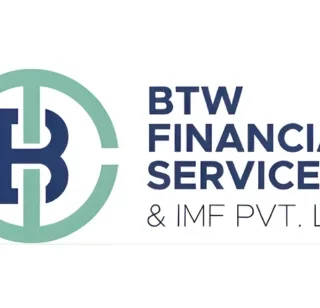
Dr. Swarnlata Panchal on India’s Healthcare Challenges
The State of Healthcare in India: Challenges & Opportunities
By Dr. Swarnlata Panchal, PhD (Medical Biotechnology), MBA (International Business)
India’s healthcare system today stands at a defining juncture — a complex blend of progress and persistent challenges. With a population exceeding 1.4 billion, the country continues to balance between expanding access, ensuring affordability, and maintaining quality in healthcare delivery. The sector is evolving rapidly, driven by government reforms, digital transformation, and increasing public awareness about health equity.
A System Under Pressure
India’s healthcare infrastructure remains under strain despite remarkable growth. The country has only one hospital bed for every 1,844 people and one doctor for every 1,511 citizens, both below WHO’s recommended ratio of 1:1,000. Rural India, home to nearly 65% of the population, continues to face critical shortages of hospitals, specialists, and diagnostic facilities.
Over 60% of healthcare expenses are still paid out-of-pocket, pushing an estimated 2.2 crore citizens into poverty annually. Urban centers dominate in terms of resources, while remote regions often rely on under-equipped primary health centers (PHCs).
Learning from the Pandemic
The COVID-19 pandemic exposed deep systemic vulnerabilities—shortages of oxygen, ICU beds, and workforce burnout. However, it also catalyzed a massive digital health revolution. Platforms such as CoWIN, e-Sanjeevani, and Apollo 24/7 showcased India’s capability to implement large-scale telemedicine and vaccination programs efficiently.
The crisis underscored the urgent need for universal preparedness, data integration, and investment in preventive care — not just reactive treatment.
Government Initiatives Driving Change
India’s policymakers have introduced several transformative health programs:
- Ayushman Bharat (PM-JAY): The world’s largest publicly funded health insurance, covering ₹5 lakh per family for over 55 crore beneficiaries.
- Ayushman Arogya Mandirs (AB-HWC): Over 72 lakh centers now offer comprehensive primary care.
- National Digital Health Mission (NDHM): More than 8 crore ABHA IDs have been generated, enabling unified health records.
- U-WIN Platform: Enhances real-time vaccination data and transparency.
Achievements and Progress
India has made commendable achievements in the past decade:
- Disease Elimination: Polio eradicated (2014), Trachoma eliminated (2024), and Kala-azar reduced by 98.7%.
- Maternal & Child Health: Maternal mortality down by 83% since 1990, with 95% institutional deliveries.
- Digital Expansion: Over 12,000 PHCs now operate 24/7.
- Affordable Access: Jan Aushadhi Kendras provide low-cost medicines across 14,000+ outlets, cutting costs by up to 80%.
- Global Pharma Leadership: India produces 60% of the world’s vaccines and ranks third globally in pharmaceutical production.
Challenges that Persist
Despite progress, India continues to face multi-layered challenges:
- Infrastructure Deficits: Insufficient beds, diagnostics, and specialized staff in rural areas.
- Financial Barriers: Limited insurance penetration and high out-of-pocket expenditure.
- Workforce Shortages: Nurse-to-patient and doctor-to-patient ratios below global standards.
- Inequity: Gender, caste, and income disparities still affect healthcare access.
- Misinformation & Stigma: Vaccine hesitancy and mental health taboos continue to impact public health.
Motivation and the Human Element
According to Dr. Swarnlata Panchal, “Motivation is the foundation of an effective healthcare system.” She highlights that non-financial rewards — such as recognition, autonomy, and opportunities for skill growth — significantly enhance job satisfaction among doctors, nurses, and community health workers.
Training, mental health support, and strong leadership are equally vital in preventing burnout and ensuring compassionate care.
The Road Ahead
To achieve Universal Health Coverage (UHC), India must raise its public health expenditure from 1.2% to at least 3% of GDP. Investments in primary healthcare, telemedicine, artificial intelligence, and MedTech innovation can bridge the rural-urban divide.
During the October 2025 Healthcare Summit in Delhi, Dr. Panchal joined the Delhi Health Minister and other key leaders to discuss strategies for strengthening transparency, governance, and accountability within the healthcare ecosystem. Their shared goal: ensuring that India’s vision of “Health for All” becomes a lived reality.

Writer
Dr. Swarnlata Panchal
Associate Professor, Department of Medical Biotechnology
Director – International Affairs, NIMS University Jaipur, India
Honorary Scientist – Community Medicine, AIIMS India
Director – Nicole Ed Pvt. Ltd. (Medical Education)
PhD (Medical Biotechnology) | MBA (International Business)
🔗 Nicole Ed Pvt. Ltd. | Healthcare Researcher & Education Leader
📍 Based on ongoing developments and discussions during the October 2025 Healthcare Summit, Delhi.




